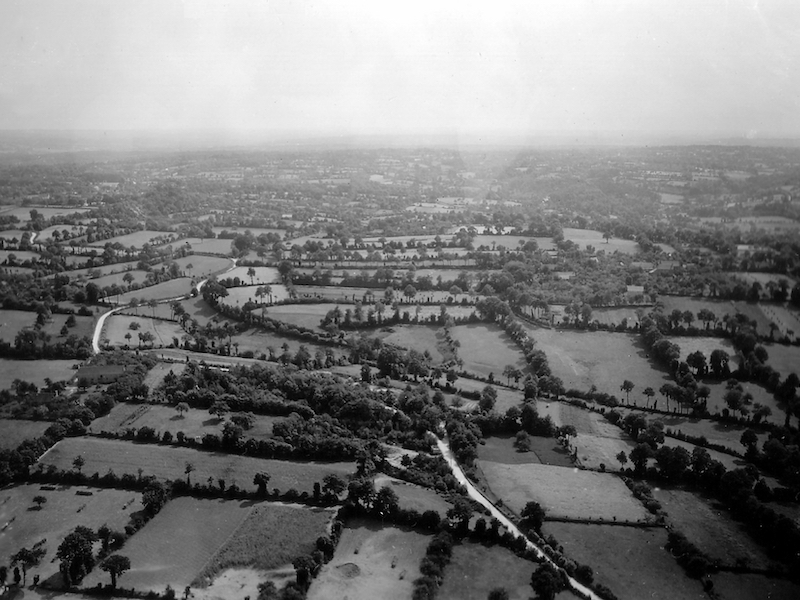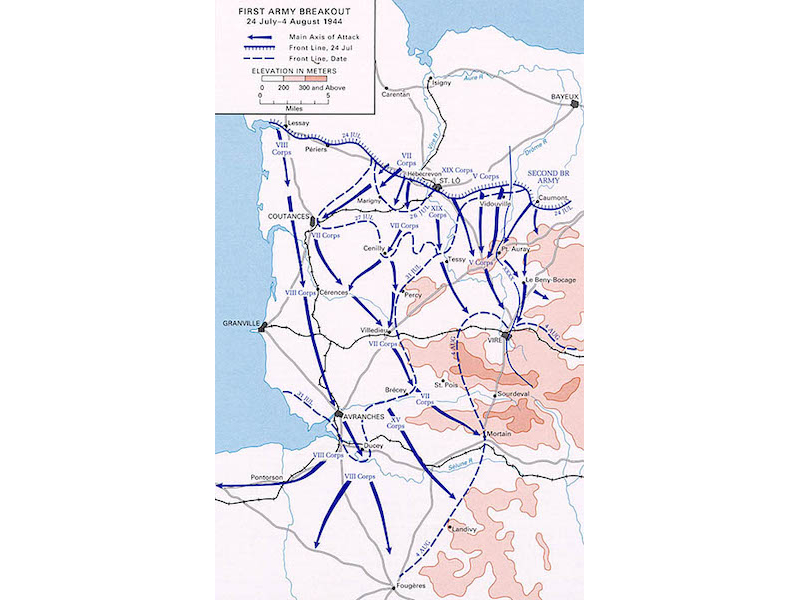The Invasion of Europe by the Allied forces started on D-Day (June 6, 1944) with days of hard fighting once the forces landed. D-Day was just the beginning of seven weeks of hard fighting in Northern France. Once the forces moved in from the beach of Normandy, the Battle of the Hedgerows started and culminated with Operation Cobra in midsummer 1944. As with all plans, things don’t always go as expected and there are always things that are unseen that have to be dealt with. The lessons that were hard learned during those seven weeks would continue to be taught into modern times.
When the initial wave of Allied forces landed in Normandy, they were some of the first soldiers to encounter the hedgerows. These masses of foliage, fruit trees, vegetables, and brambles formed the edges of pastures, orchards, and fields of the farmers in the area, and wreaked havoc for the soldiers, mainly the American forces. The culmination of the hedgerow battles was at the town of St. Lo.

The hedges, up to 15 feet high in places, were a natural place for the Germans to stash munitions, soldiers, and machinery. The Germans would place heavy machine guns at the corners of the fields to pin down any Allied forces out in the open, while lighter machine guns would be on the flanks to inflict damage to those seeking cover. This caused most of the main fighting to happen at crossroads and in the open areas of bridges. General Bradley had a plan for a strong offensive to keep Germans from getting any of their forces concentrated in the area.

The next day, the fighting continued with American forces barely making it a mile down the road towards their objective. The slow stalemate lasted until the early morning hours of July 7, when American forces from the 30th Division crossed the Vire River and Taute-Vire Canal in 32 assault boats. With wave after wave of American soldiers crossing, the forces overwhelmed German forces, and by that evening, Americans had secured St. Jean.

On the morning of July 11, 1944, the focused push to St. Lo finally occurred. With the German forces holding key high positions around the city which provided easy vantage points to view the movements of the American forces, it was realized that the Americans needed to hold those positions before they could secure the city. Over the next week, American forces fought German positions on the hills and in the hedgerows around the town, with heavy loss of life. By the morning of July 17, the decision to take the town no matter what was made. They advanced through German lines and fought through the town block by block. By July 18, the German command saw what was coming in the town and requested permission to quit St. Lo and regroup elsewhere. It would take another week for the city to be completely in American hands. Thus, ending the battle for St. Lo.

Unfortunately for planners, many that were killed in the bomb drops were American soldiers, with over 100 reported killed and nearly 500 injured. According to reports, the original plan was for the bombs to run parallel to American lines and push out toward the German lines. However, the bombs landed perpendicular to some American positions, causing many unwarranted casualties, much against what General Bradley was trying to accomplish.
Luckily, the bombing did have the desired effect on German morale and defensives and left the German line fractured. The day after the attack, the German 7th Army reported seven breaks in their lines in the area and had an estimated 1,000 casualties and several destroyed command posts. With the breaks present in the line, more than 100,000 American soldiers poured through the lines and were able to turn on the German left flank and capture several important bridges in the area. With those bridges in American hands, Patton’s Army was able to engage in the fighting on August 1 and further help liberate the area from German control.



